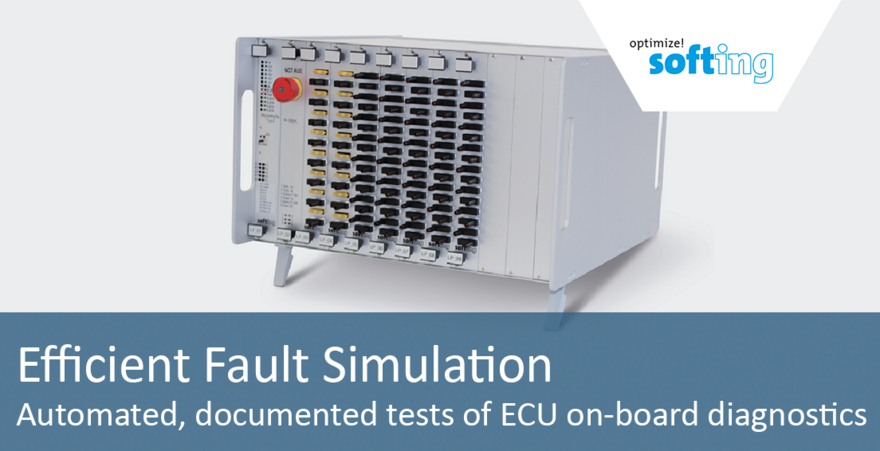Efficient Fault Simulation – Automated, documented short-circuit and open load tests of ECU on-board diagnostics

In daily operation, ECUs in the vehicle are exposed to a wide range of environmental influences, such as vibrations, strongly fluctuating ambient temperatures and high humidity. The components must therefore be able to handle all conceivable faults. For testing, these faults are simulated on the ECU pin and the respective behavior and diagnostic entry is documented. Typically, such fault simulations are used for function tests during development, for testing, release and validation of ECUs and components, as well as for integration validation during HiL testing or at the Functional Mock-Up (FMU). What used to be a time-consuming process of manual testing can now be easily integrated into everyday work thanks to automation. We offer a comprehensive portfolio of simulation technology based on many years of experience.
The fault simulation via Softing’s OBD-FSIM-Box includes diagnostic and ECU fault simulation in addition to automated breakout boxes (BOB). That way ECU signals can be short-circuited or interrupted to battery plus and minus (open load) automatically. A load resistance decade can be used to inject dirt and leakage resistances into ECU signals. A CAN bus is the key to control the fault simulation and the load resistance decade. The system offers load channels up to a continuous current of 20A and sensor channels with 1A. Each signal path is protected against overcurrent. Each channel can also be operated manually as breakout box via 4mm jumpers with a measuring pickup. The OBD-FSIM-Box is powered directly by the vehicle’s on-board network or via an external voltage source. Individual connection cables also allow the fault simulation box to be universally adapted to a wide variety of ECUs.










